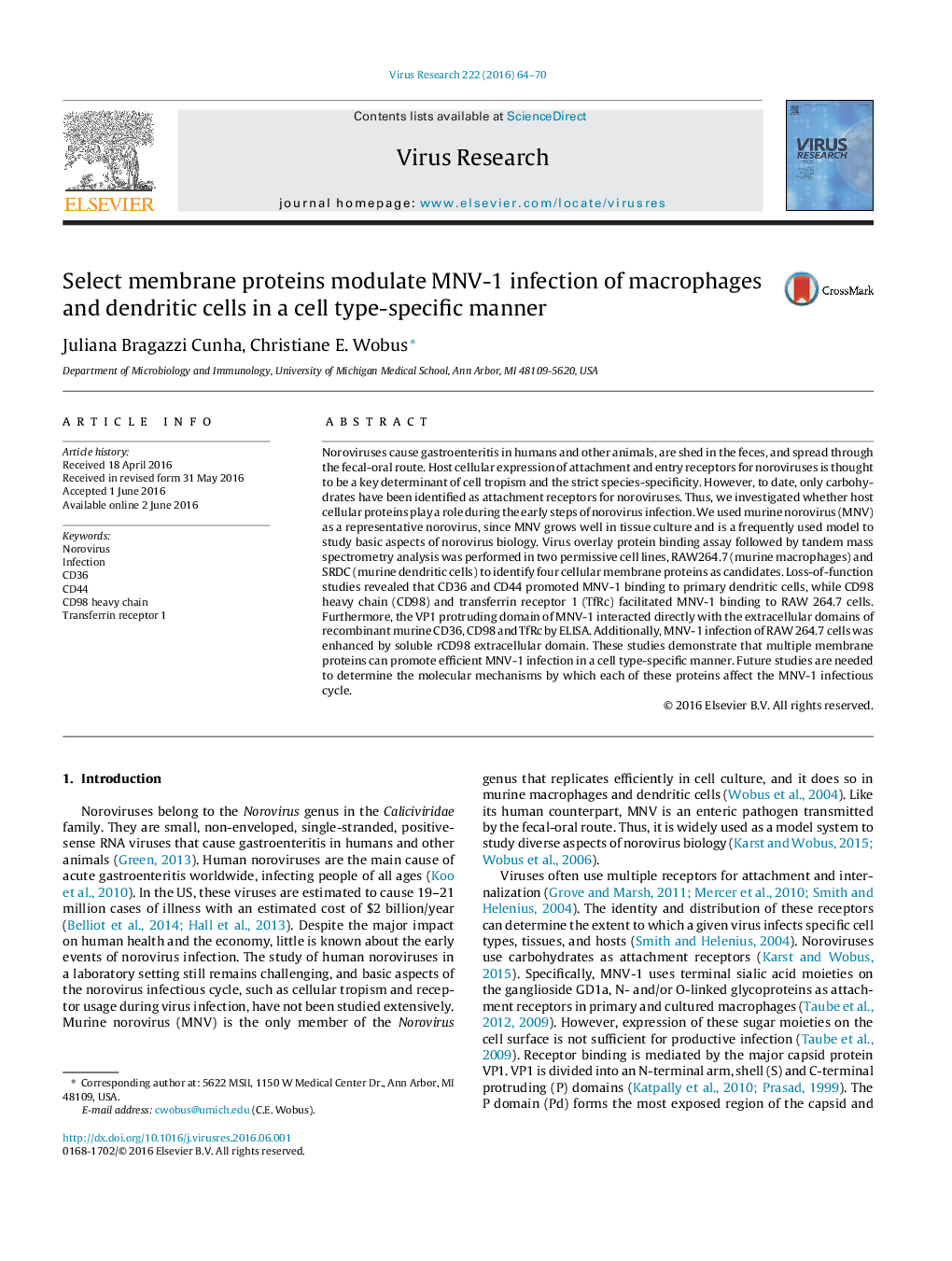| Article ID | Journal | Published Year | Pages | File Type |
|---|---|---|---|---|
| 3427824 | Virus Research | 2016 | 7 Pages |
•MNV-1 uses distinct membrane glycoproteins in different cell types during infection.•CD36, CD44, CD98 and TfRc modulate MNV-1 infection in a cell type-specific manner.•MNV-1 binds the extracellular domain of recombinant murine CD36, CD98, and TfRc.•The MNV-1 capsid protein P domain binds to the extracellular domain of recombinant murine CD36, CD98, and TfRc.•CD98 enhances MNV-1 infectivity in a murine macrophage-like cell line.
Noroviruses cause gastroenteritis in humans and other animals, are shed in the feces, and spread through the fecal-oral route. Host cellular expression of attachment and entry receptors for noroviruses is thought to be a key determinant of cell tropism and the strict species-specificity. However, to date, only carbohydrates have been identified as attachment receptors for noroviruses. Thus, we investigated whether host cellular proteins play a role during the early steps of norovirus infection. We used murine norovirus (MNV) as a representative norovirus, since MNV grows well in tissue culture and is a frequently used model to study basic aspects of norovirus biology. Virus overlay protein binding assay followed by tandem mass spectrometry analysis was performed in two permissive cell lines, RAW264.7 (murine macrophages) and SRDC (murine dendritic cells) to identify four cellular membrane proteins as candidates. Loss-of-function studies revealed that CD36 and CD44 promoted MNV-1 binding to primary dendritic cells, while CD98 heavy chain (CD98) and transferrin receptor 1 (TfRc) facilitated MNV-1 binding to RAW 264.7 cells. Furthermore, the VP1 protruding domain of MNV-1 interacted directly with the extracellular domains of recombinant murine CD36, CD98 and TfRc by ELISA. Additionally, MNV-1 infection of RAW 264.7 cells was enhanced by soluble rCD98 extracellular domain. These studies demonstrate that multiple membrane proteins can promote efficient MNV-1 infection in a cell type-specific manner. Future studies are needed to determine the molecular mechanisms by which each of these proteins affect the MNV-1 infectious cycle.
